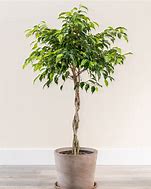Floral Certification Vocabulary Review
1/76
Earn XP
Description and Tags
A comprehensive review of important vocabulary terms related to floral design and certification.
Name | Mastery | Learn | Test | Matching | Spaced |
|---|
No study sessions yet.
77 Terms
DRY PACK
The storage or shipment of flowers out of water.
PROCESSING
Cutting flower stems properly and providing proper treatment at any stage of the distribution process.
Mechanics
Supplies, methods, and materials that designers use to place and hold flowers.
RETAIL FLORIST
A florist who sells floral goods and services directly to the consumer.
VASE LIFE
The length of useful life of cut floral materials after being received by the customer.
BUNDLING
Firmly wrapping or tying similar materials together to form a larger individual unit.
LIGHT INTENSITY
The level of light received on a plant surface.
FRAMING
A design technique in which branches of flowers are used around the perimeter of a floral arrangement to direct attention to the materials in the center of the arrangement.
PILLOWING
The tight positioning of flower clusters at the base of an arrangement forming rounded hills.
TERRACING AND LAYERING
Design techniques used to place similar materials horizontally on top of each other.
IKEBANA
The Japanese style of floral arrangements characterized by their linear forms.
CORSAGES
Worn floral arrangements typically created for special occasions.
BENT NECK IN FLOWERS
Occurs due to the inability of water to enter the stem.
PAVE ARRANGEMENTS
Flower arrangements characterized by a uniform area with little or no variation in depth.
ABSTRACT DESIGNS
Floral designs that contain more than one single focal point.
VEGETATIVE DESIGN
A naturalistic design style in which flowers and plant materials are placed as they would grow in nature.
WATERFALL DESIGN
A floral design utilizing shorter stems of mass flowers that provide a color and focal point near the rim of the container.
CUSTOMER EDUCATION
The process by which florists educate customers to help them enjoy their flowers to the fullest extent.
FLORAL PRESERVATIVE
A mixture of ingredients added to water to extend the vase life of cut flowers.
HYDRATING SOLUTION
A citric acid solution that helps flowers take up water rapidly to prevent dehydration.
PHOTOSYNTHESIS
The process of converting nutrients, water, carbon dioxide, and sunlight into food for plants.
RESPIRATION
The cell process in which stored food reserves are converted into useful energy for the plant.
TRANSIRATION
The process of plants losing water through stomata in their leaves.
INTERPRETIVE DESIGN
Floral design using both natural and man-made materials in an unnatural manner to create new images.
FORMAL-LINEAR DESIGN
An asymmetrically balanced design of few materials usually placed in groups that emphasize forms and lines.
PARALLEL DESIGN
A design consisting of clusters or groups of flowers and foliage that strengthens the element of line.
LINE FLOWERS
Used as primary flowers to establish the skeleton or outline height or width of an arrangement.
FORM FLOWERS
Used to create focus with unusual and distinctive shapes.
FILLER FLOWER
A type of flower used to complete a design.
MASS FLOWERS
Flowers that are usually single stem with large rounded heads used to fill in arrangements.
SKELETON FLOWERS
Primary or line flowers used in a design to establish the outline of the arrangement.
CASCADE DESIGN
A design consisting of several layers of materials, varying in size and texture to create a flowering effect.
FOCAL POINT
The location within a design that attracts the most attention; the center of interest.
PRIMARY COLORS
Red, yellow, and blue; the base colors that cannot be created by mixing other colors.
SECONDARY COLORS
Colors created by combining two primary colors in equal amounts.
INTERMEDIATE COLORS
Colors formed by mixing equal amounts of a primary color and an adjacent secondary color.
SCALE
The relationship between the completed arrangement and its location.
PROPORTION
The relationship between the flowers, foliage, and container.
BALANCE
The impression of the design being stable and self-supported.
CONDITIONING
The process in which cut flowers and foliage have been treated to extend their freshness.
ASYMMETRICAL DESIGN
A triangular pattern with a strong 'L-Line' that is not symmetric.
SYMMETRICAL DESIGN
A formal equilateral triangular design.
ROUND DESIGNS
Floral designs which do not require a focal point.
PIERCING METHOD
Corsage wiring technique in which a wire is inserted through the calyx and bent downward.
HOOK METHOD
Wiring technique where a small hook is formed in the wire before it is pulled back into the flower.
HAIRPIN METHOD
Corsage wiring technique in which the wire is shaped into a hairpin.
WEDDING FLOWERS
Include brides' bouquets, bridesmaids’ bouquets, corsages, and boutonnieres among others.
FOLIAGES
Used to hide mechanics in a flower arrangement.
LINE ELEMENT
The visual path the eye follows as it proceeds through a floral arrangement.
FORM
The geometric shape or line design that outlines the flower arrangement.
COLOR
Made up of twelve major colors used in floral design.
BACTERIAL GROWTH
Prevented by removing foliage from the stem that is below the water level in an arrangement.
WIRE
Different gauges of wire used for floral work; finer wires like #28 are best for lighter flowers.
INTENSITY
The brightness or darkness of a hue.
VALUE
Describes the lightness or darkness of a hue.
TONE
The measure of color intensity when gray is added to a hue.
TINT
Adding white to a color lightens its tint.
SHADE
A hue darkened by the addition of black.
RE-CUTTING STEMS
Helps prevent stem blockage and maximize the freshness of the product.
REFRIGERATION OF FRESH PRODUCT
Helps slow down respiration and reduce water loss by maintaining a low temperature and high humidity.

Weeping Fig
Ficus Benjamina is the scientific name.